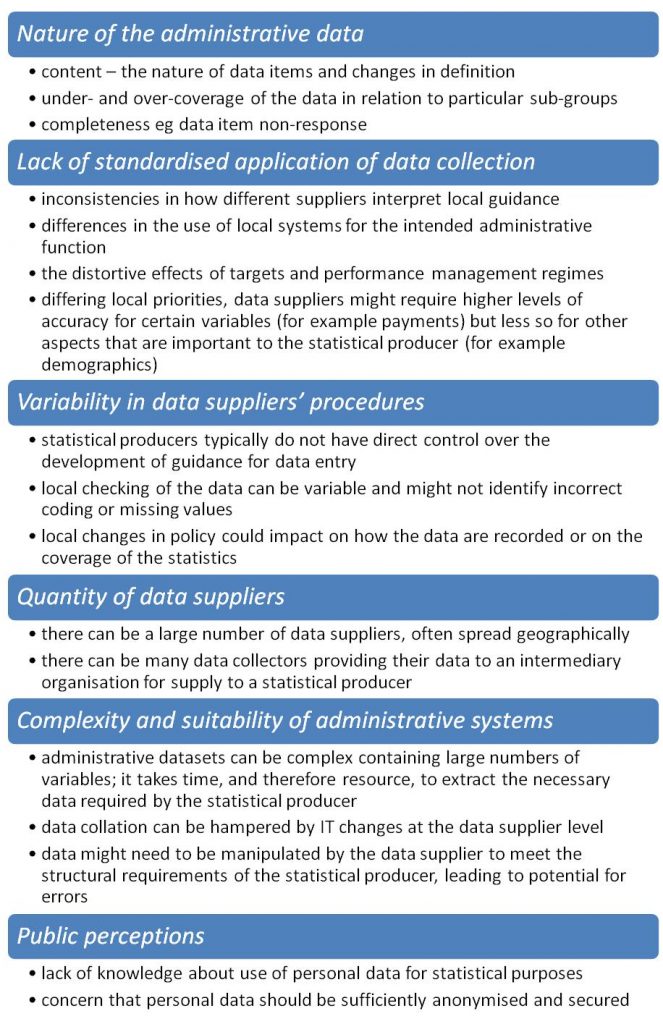Administrative data are a by-product of administrative systems developed primarily for operational purposes. Administrative data are used extensively in the compilation of many sets of official statistics about a wide range of topics – these include: health, such as waiting times data; crime, such as police recorded crime data; and welfare, such as the Work Programme data.
There are potential benefits to using administrative data to produce official statistics. As resources to fund surveys have become harder to find, technology has improved, and the demand for timely statistics has increased, the greater use of administrative data seems likely to become increasingly attractive for statistical producers.
Other potential benefits stem from the ability with large administrative data sets to provide disaggregated estimates for sub-groups. In particular, administrative data can be used to provide statistics for smaller geographies than can usually be supported from survey data.
After the extraction and processing systems have been created, there is the potential to provide statistics at greater frequency than can often be supported from surveys. The benefit is not just timeliness and speed of production, but also, potentially, the frequency of production.
However, there can be limitations in the nature of administrative or operational systems that can affect the statistics derived from the underlying data. Such problems may arise from:
- Nature of the administrative data
- Lack of standardised application of data collection
- Variability in data suppliers’ procedures
- Quantity of data suppliers
- Complexity and suitability of administrative systems
- Public perceptions
These situations require investigation by statistical producers and clear communication about the limitations to users.
These challenges can affect different aspects of the quality of the data, such as the reported uncertainty around the data, as well as their comparability, standardisation and coherence and enabling the linkage with other datasets.
Both data suppliers and statistical producers need to take account of public perceptions about the use of personal data for statistical purposes and ensure that the data are sufficiently anonymised and secure.
The challenges of using administrative data

